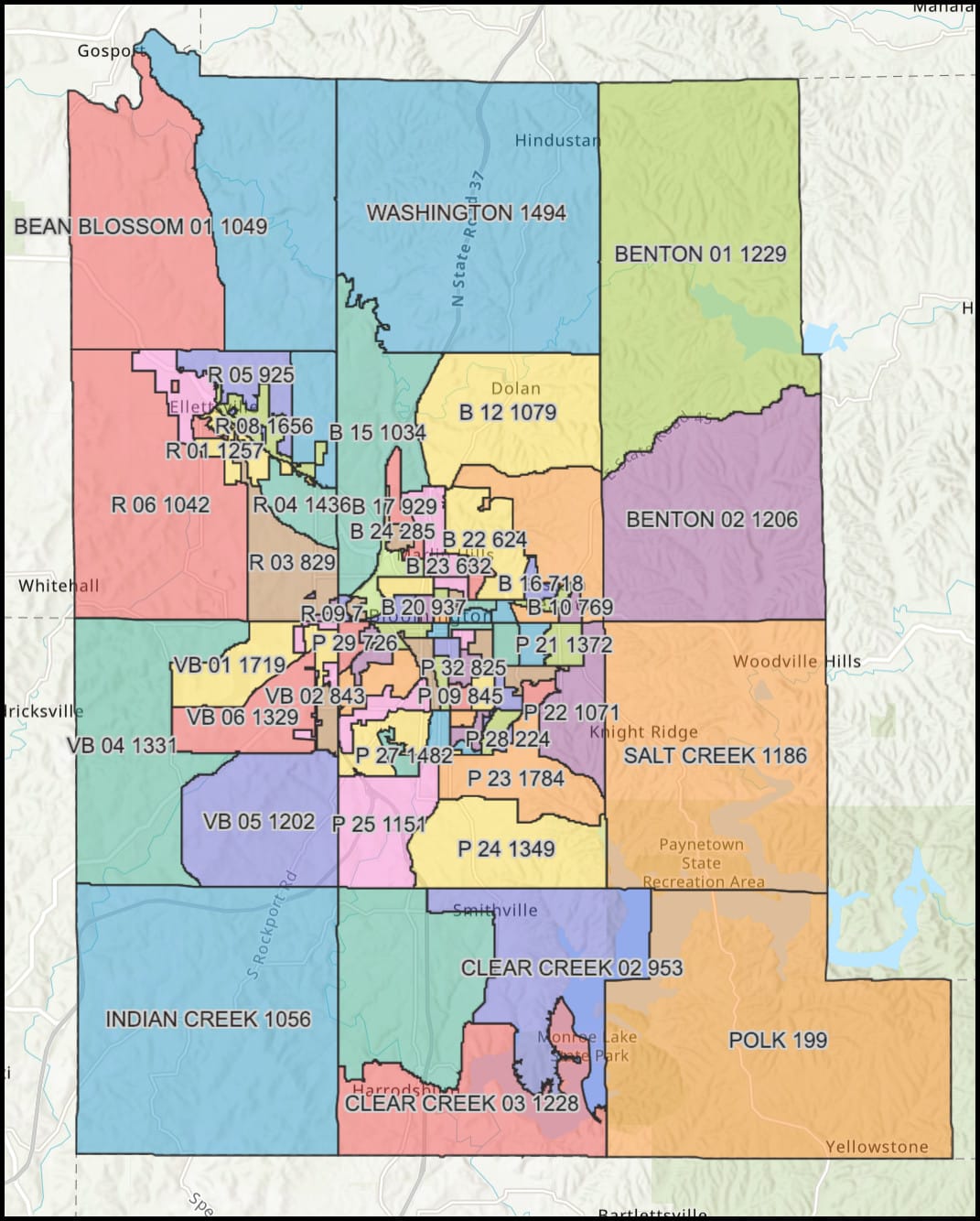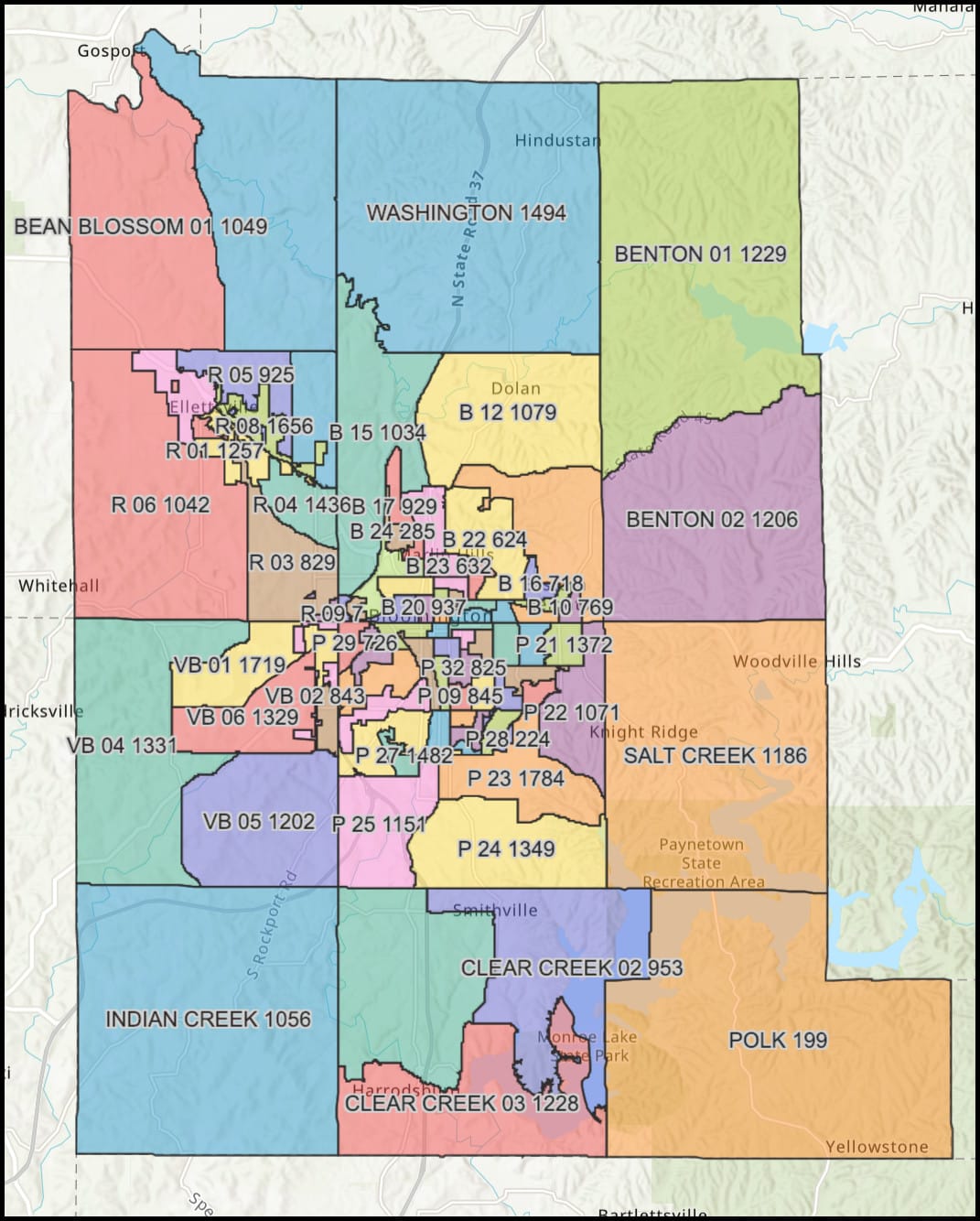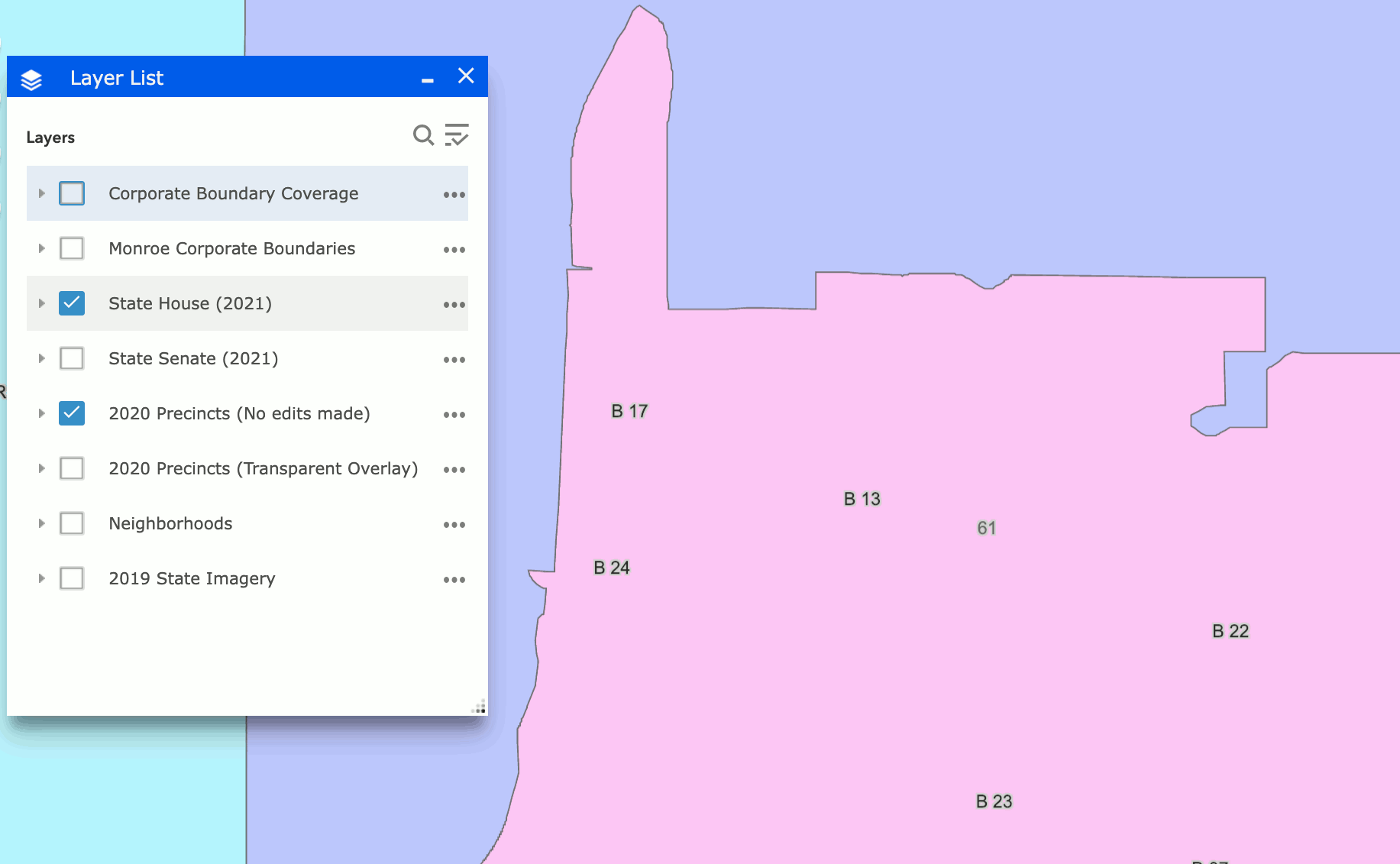Advisory committee dives into precinct boundary work for Monroe County



A four-member committee established by the Monroe County board of commissioners has now met twice as it tackles the task of making recommendations on new precinct boundaries for the county.
Once the precincts are settled, the group will make recommendations on boundaries for county council and county commission districts. It will be the three county commissioners who make the decision on all the boundaries.
Appointed by county commissioners to the committee were two Democrats (Regina Moore and Ed Robertson) and two Republicans (Joyce Poling and Hal Turner).
At its Thursday meeting this week, the four asked county attorney Jeff Cockerill and GIS specialist Jared Eichmiller to prepare for the next meeting by listing out each of the 21 current precincts that have fewer than 800 active voters and provide data from neighboring precincts, including: number of active voters, total number of voters and 2020 census population.
They’re looking at the possibility of combining some precincts that have a small number of active voters. The statutory limits include an upper bound of 2,000 active voters and a lower bound of 600. The lower bound applies to precincts established after June 30, 2019.
Monroe County currently has 82 precincts.
Under state law, an active voter means someone who has registered or voted in any election during the preceding four years at the address indicated on the voter’s registration record, or who has responded has responded in writing to an address confirmation notice.
Cockerill and Eichmiller’s work will depend on a blend of information currently provided on the committee’s web page as a spreadsheet of precincts and a dynamic mapping resource.
For the committee’s next meeting, the two will also be preparing a listing of precincts that have noncontiguous parts, with an eye towards modifying boundaries so that the precincts have just one unified piece.
In some cases that won’t be possible. But in other cases, like Precinct Bloomington 17, it might be feasible to merge a separated piece into a neighboring precinct.
Part of the prep work for the next committee meeting will include documenting the reasons for the lack of contiguity for a given precinct, if it’s known—like a city boundary line, a state senate line, or a state house line. Precincts are not allowed to cross those boundaries.
Also part of the next meeting’s preparation will be information about school district boundaries.
The committee’s work is subject to Indiana’s Open Door Law. The schedule of meetings can be tracked on the Monroe County meeting calendar.
Dates that have already been set include:
- Thursday, Oct. 21, 2021 at 2 p.m.
- Monday, Oct. 25, 2021 at 11 a.m.
- Thursday, Oct. 28, 2021 at 2 p.m.
- Monday, Nov. 1, 2021 at 11 a.m.
- Thursday, Nov. 4, 2021 at 2 p.m.
- Monday, Nov. 8, 2021 at 11 a.m.
- Monday, Nov. 15, 2021 at 11 a.m.
- Thursday, Nov. 18, 2021 at 2 p.m.
- Monday, Nov. 22, 2021 at 11 a.m.
The redistricting work on the local level has the same impetus as the state level process—the need to incorporate the results of the 2020 decennial census into voter districts for different elected offices.
The committee will have to complete its work on a compressed timeline compared to previous years, because of the ripple effect of the late 2020 census. The late timing for the release of 2020 census numbers led to a late start for state legislators on their work to redraw state-level boundaries.
It was not until Oct. 4 when Indiana governor Eric Holcomb signed off on the new state legislative districts.




Comments ()